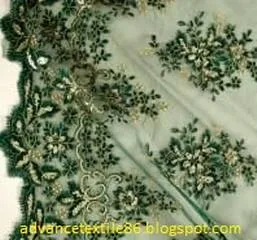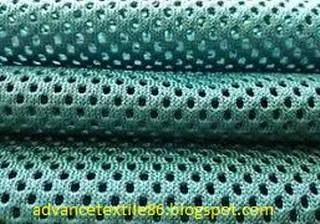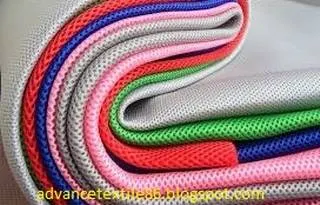Mesh fabric
Mesh
fabric is a barrier made of metal, fiber, or other flexible or pliable material
attached to a strand. Mesh fabric is like a web or net so that it has many
attached or woven strands. A mesh in garments is a loosely woven or knitted
fabric that has many closely spaced holes. Knitted mesh fabric is often used for
modern sports jerseys and other clothing such as hosiery and lingerie. A mesh
skin graft is a skin patch that has been systematically cut to create a mesh.
It is commonly used to make casual wear and fashion wear like vests, clothing,
and other layered items. The mesh is still incredibly popular in sportswear due
to its breathability and ability to control the temperature well.
History
of mesh fabric
The
history of mesh fabric may be traced back to 1888 when a British mill owner
came up with the idea of a clean and breathable material that could withstand
temperature changes. Such yarns are knitted or woven together, and with open
spaces between yarn strands, it is a great material for clothing and fashion
and has been used in finished products such as clothing, wrappers, gloves, and
scarves in the last century. When wet or dry, the material has a great crocking value which simply means the dyes will not stick off. It is also very easy to
sew with mesh.
Mesh fabric properties
1.
Mesh fabric durability medium
2.
It is a lightweight fabric
3.
Easy to clean
4.
Resistance to mildew
5.
Tear resistance
6.
It has 6-16 holes per inch
7.
A variety of different synthetic fibers are used
8.
Very breathable fabric
9.
It has medium moisture-wicking abilities
10.
It has low heat retention abilities
11.
It has high stretchability
The production process of mesh fabric
Mesh
fabric is made from different fibers depending on the type of fiber from it.
Although nylon and polyester are very similar in many ways, polyester nylon was
made decades later, meaning that the production of this synthetic material
follows a significantly more advanced manufacturing process.
Although
the processes used to make these two types of fabric fibers are different, for
each type of fiber, the process begins with the refining of petroleum oils.
Polyamide monomers are then extracted from this oil and these monomers are then
reacted with different types of acids to form polymers.
These
polymers usually harden after the reaction and they are forced to form polymer
strands by melting through spinnerets. Once these strands have cooled, they can
be loaded into spools and shipped to textile manufacturing facilities to make
mesh fabric.
In most cases, manufacturers of mesh fabrics need to dye their polyester or nylon
fibers before weaving them into the fabric. Textile manufacturers can weave these
fibers in different ways to create different forms of mesh. For example, many
types of nets follow a basic square that has proven itself to be effective over
thousands of years. More contemporary forms of mesh, such as tiles, may be woven with hexagonal structures.
Application of mesh fabric
1.
It is used as a vacuum belt filter in automotive and manufacturing applications
2.
Due to its breathability, water and moisture evaporate and can evaporate,
making it ideal for swimming bags, laundry bags, and backpacks.
3.
It is often used as a mosquito control barrier and for other insects when
overlay-ed and placed on windows and screens.
4.
Metal and nylon wire mesh filters are used for penetration.
5.
Wire mesh belt
6.
It is used in clothing, such as scarves, vests, hats, and gloves
7.
Wire mesh is used to protect secure areas and as protection in the form of
vandal screens.
8.
It is used in liners of pockets and bags
9.
Mesh fabric is used in wind tunnel screens
10.
It can be used for eye protection in masks
11.
Dry meals and dry powder in wire cloth belts
12.
Search and transport food
12.
Gardens to keep bugs and birds away from garden trees
13.
It is used on tennis court screens
14.
Wire mesh can be fabricated to produce park benches, waste boxes, and other baskets
for material handling.
15.
Knitted mesh used in screen printing
16.
Surgical nets are often used in surgical procedures such as umbilical hernia
repair or to provide a stronger structure for inguinal hernioplasty. This mesh
fabric can be permanent or non-permanent.
17.
It is used as a drum head in electronic drum sets.
18.
Fencing and maintenance for cattle and poultry
19.
It can be used for the human capture of wild animals and rats.












0 Comments